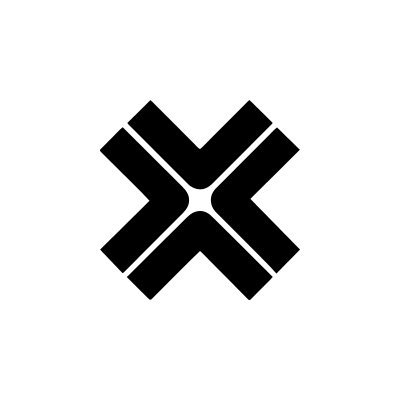Scaling solved fees, now we need to solve fragmentation.
But ETH doesn’t need more bridges, it needs one standard.
ERC-7786 delivers that ⤵️
La mise à l’échelle via L2s est devenue le plus gros problème d’Ethereum :
+ de 50 rollups isolés avec une liquidité fragmentée et des ponts complexes.
Les solutions inter-chaînes existent, mais nous avons besoin de normes pour les unir.
Voici comment les normes d’interopérabilité pourraient revitaliser l’ETH :
Tout d’abord, comprenons comment nous en sommes arrivés là.
Ethereum a eu un problème de mise à l’échelle au cours du dernier cycle. Les frais de gaz ont culminé à 100 $ + par transaction alors que les utilisateurs se disputaient l’espace de bloc.
Des correctifs de couche 2 sont apparus pour résoudre ce problème, et ils ont fonctionné.
Base, Arbitrum, Optimism et des dizaines d’autres ont réussi à étendre la capacité d’Ethereum, avec des frais désormais comptés en centimes.
Mais ils ont également créé un nouveau problème : la fragmentation.
Les utilisateurs doivent désormais naviguer entre des écosystèmes isolés qui ne communiquent pas entre eux. L’impact dans le monde réel est significatif. Imaginez que vous avez des fonds sur Optimism mais que vous souhaitez utiliser une application sur Base. Vous devez :
• Trouver un pont
• Payer des frais élevés
• Attendre les périodes de finalité
• Gérer plusieurs portefeuilles
L’expérience utilisateur est pour le moins difficile. Mais des normes d’interopérabilité sont actuellement en cours d’élaboration pour unifier l’écosystème Ethereum.
En général, je ne suis pas un fan des normes ; Cependant, l’absence de normes dans cette situation a entraîné des goulets d’étranglement répétés pour les développeurs.
Décomposons-en quelques-uns :
1. La première norme d’interopérabilité de notre liste est la norme d’intention d’Across et d’Uniswap (ERC-7683).
Les Intents permettent aux utilisateurs d’exprimer ce qu’ils veulent (échanger le jeton X sur @base
pour le jeton Y sur @arbitrum), puis les « solveurs » se feront concurrence pour exécuter la commande dans le chemin le plus optimisé.
Voici comment cela fonctionne :
Lorsque vous demandez un échange inter-chaînes, un réseau décentralisé de « solveurs » se fait concurrence pour exécuter votre commande. Ils disposent de la liquidité et fournissent une exécution rapide, tandis que le règlement final s’effectue plus tard via une messagerie inter-chaînes sécurisée.
C’est fondamentalement différent des ponts traditionnels, où :
• Vous verrouillez des jetons dans un contrat sur la chaîne A
• Attendre la confirmation (souvent quelques minutes ou heures)
• Ensuite, obtenez des jetons enveloppés sur la chaîne B
Les approches basées sur l’intention placent l’expérience utilisateur au premier plan, le règlement se produisant par la suite.
La norme ERC-7683 vise à garantir que les protocoles partagent des informations dans un langage cohérent afin que tout solveur du réseau décentralisé puisse comprendre l’ordre et l’exécuter.
Et l’ERC-7683 n’est pas la seule norme à tenter de s’attaquer à la fragmentation inter-chaînes.
2. Il existe de nombreuses autres normes qui tentent d’assembler des rouleaux isolés.
Voici un bref aperçu :
• RIP-7755 : Permet des transactions sans confiance entre les cumuls via un réseau sans autorisation de remplisseurs d’exécution.
• RIP-7859 : Expose les informations d’origine de couche 1 dans les environnements de couche 2, améliorant ainsi la vérification des données inter-chaînes.
• ERC-7828 : Introduit des adresses spécifiques à la chaîne dans ENS, réduisant ainsi la confusion lors de l’envoi de ressources sur différentes chaînes.
Chacune de ces normes est un pas vers la résolution d’écosystèmes isolés. Cependant, ils sont tous confrontés au même problème sous-jacent :
Nous avons toujours besoin d’un langage commun pour que les chaînes communiquent à la couche de base. Sans cela, la fragmentation persiste.
Pour vraiment faire évoluer la couche d’applications Ethereum à travers les chaînes, les normes ci-dessus et les développeurs ont besoin d’un langage partagé.
3. Cela nous amène à ERC-7786, une interface universelle proposée pour la messagerie entre blockchains.
C’est comme si vous vous mettiez d’accord sur un format d’adresse postale, afin qu’UPS, FedEx ou DHL puissent tous livrer votre colis.
Proposé par @OpenZeppelin and @interop_labs (le développeur du réseau @axelar), l’ERC-7786 est minimaliste de par sa conception, conçu pour être léger et modulaire. L’objectif est de réduire la dépendance vis-à-vis d’un fournisseur et de permettre de véritables applications natives inter-chaînes.
La norme ERC-7786 :
• Encodage des champs de message
• Logique d’envoi et de réception
• Garanties de sécurité
• Des « attributs » facultatifs pour le comportement spécifique au protocole
La norme est conçue pour être flexible, de sorte que les développeurs peuvent écrire du code une seule fois et le déployer sur plusieurs chaînes (y compris les environnements L2 et non EVM).
L'« abstraction en chaîne » reste l’objectif ultime :
• Les utilisateurs ne devraient pas avoir besoin de savoir sur quelle chaîne ils se trouvent.
• Les portefeuilles doivent fonctionner partout.
• Les actifs doivent pouvoir circuler librement.
À l’heure actuelle, le capital est bloqué de manière inefficace dans des dizaines de contrats-relais. Pendant ce temps, les développeurs perdent du temps à apprendre plusieurs interfaces propriétaires tandis que les utilisateurs supportent le coût de la complexité.
La standardisation crée une marée montante qui soulève tous les bateaux.
Dans l’histoire de la technologie, les normes ouvertes accélèrent constamment la croissance de l’écosystème.
TCP/IP a unifié l’Internet, HTTP a normalisé le Web, et maintenant, les normes d’interopérabilité vont réunifier l’écosystème d’Ethereum.

5,79 k
0
Le contenu de cette page est fourni par des tiers. Sauf indication contraire, OKX n’est pas l’auteur du ou des articles cités et ne revendique aucun droit d’auteur sur le contenu. Le contenu est fourni à titre d’information uniquement et ne représente pas les opinions d’OKX. Il ne s’agit pas d’une approbation de quelque nature que ce soit et ne doit pas être considéré comme un conseil en investissement ou une sollicitation d’achat ou de vente d’actifs numériques. Dans la mesure où l’IA générative est utilisée pour fournir des résumés ou d’autres informations, ce contenu généré par IA peut être inexact ou incohérent. Veuillez lire l’article associé pour obtenir davantage de détails et d’informations. OKX n’est pas responsable du contenu hébergé sur des sites tiers. La détention d’actifs numériques, y compris les stablecoins et les NFT, implique un niveau de risque élevé et leur valeur peut considérablement fluctuer. Examinez soigneusement votre situation financière pour déterminer si le trading ou la détention d’actifs numériques vous convient.


